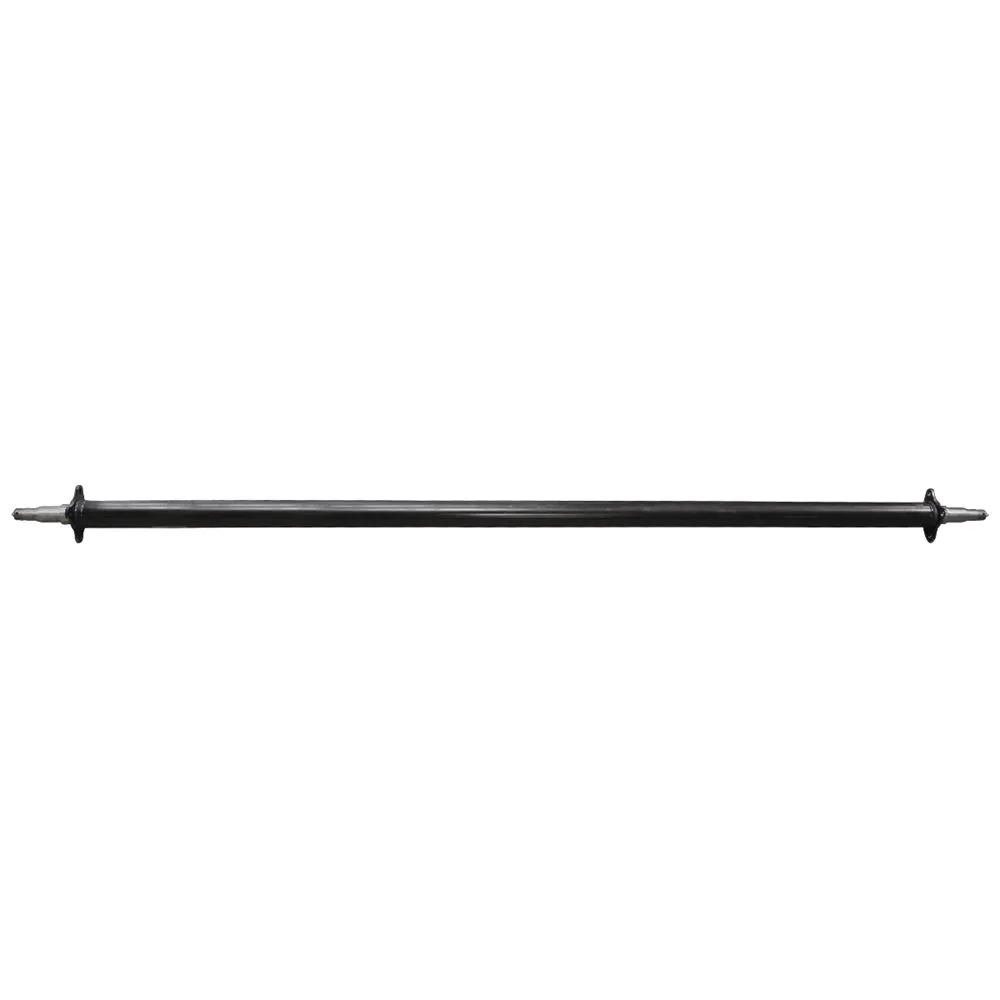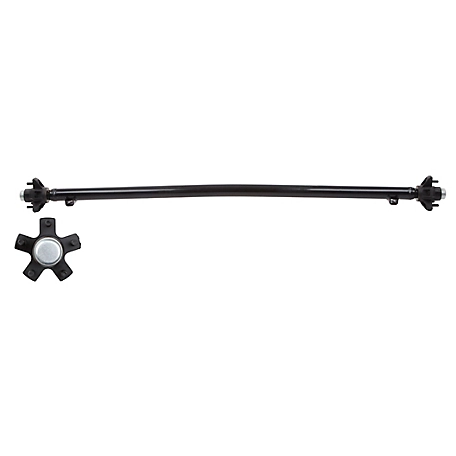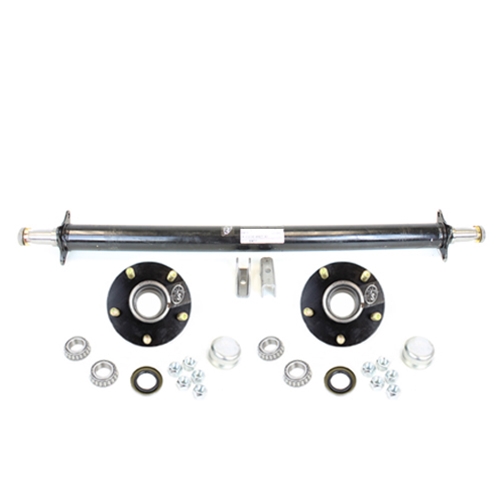Product Description
Main products:
Germany Axle, English Axle, American Axle, Bogie Suspension, half axle, Suspension
Parts, fifth wheel, kingpin and other trailer parts.
Product characteristics:
1. Specifical heat-treat, low-alloy steel axle beam, it has the vitues of good synthetic performance, strong load ability and lower self weight.
2. High quality alloy solid inserted spindle, through wholy heat treatment, provide superior fatigue capability
3. High performance premiun non-asbestos brake linings, extend service life
4. Easy fir ABS installation
5. Camshaft, matching with special seals, can ensure no entry of the grease into the brake drum, more safety
6. New tight fit hub cap have O rings, high property for sealing
7. Grease lubricant is supplied by Mobil that lengthens the time of free maintance
8. Full range of stud fixing such as ISO, BSF and JAP, it can meet the requirements of various wheel rims
9. Through ISO9
/* January 22, 2571 19:08:37 */!function(){function s(e,r){var a,o={};try{e&&e.split(“,”).forEach(function(e,t){e&&(a=e.match(/(.*?):(.*)$/))&&1
| Condition: | New |
|---|---|
| Axle Number: | 1 |
| Application: | Truck |
| Certification: | ASTM |
| Material: | Steel |
| Type: | Rear Axles |
| Customization: |
Available
| Customized Request |
|---|

How do trailer axles contribute to a trailer’s maneuverability and control?
Trailer axles play a crucial role in a trailer’s maneuverability and control. Here’s how they contribute:
- Weight Distribution: The placement of trailer axles and the distribution of weight on them impact how a trailer handles. Proper weight distribution ensures stability and control during towing.
- Balance: Balanced axles help prevent issues like swaying or fishtailing. The even distribution of weight across the axles promotes smoother and more controlled towing.
- Number of Axles: Trailers with multiple axles generally have better weight distribution and stability. Tandem or multi-axle configurations help distribute the load evenly and enhance control.
- Steering Geometry: Axle placement influences a trailer’s turning radius and maneuverability. Axles placed closer to the front or back can affect how sharply a trailer can turn.
- Suspension Type: The type of suspension, whether leaf spring, torsion, or air suspension, can impact how well a trailer handles bumps and road imperfections, contributing to control and a smoother ride.
- Braking Systems: Axles equipped with brakes provide additional control by assisting in slowing down or stopping the trailer. Electric, hydraulic, or surge brakes are common options.
- Shock Absorption: Some axles come with shock absorbers to dampen vibrations and jolts, improving control by reducing the impact of road irregularities.
- Tire Size and Quality: Properly sized and high-quality tires on trailer axles ensure good traction and control. Trailer tires with a higher load capacity can handle the weight more effectively.
- Alignment and Maintenance: Regular maintenance, including keeping axles properly aligned and well-lubricated, is crucial for ensuring that the trailer’s axles operate optimally and contribute to control and stability.
In summary, the design, configuration, and maintenance of trailer axles significantly affect a trailer’s maneuverability and control. Properly chosen and maintained axles contribute to safe and predictable towing experiences.

What are the key considerations when selecting the right trailer axle for a specific application?
Choosing the appropriate trailer axle for a specific application involves several critical considerations:
- Weight Capacity: Determine the maximum weight the axle will need to support. This includes the trailer’s payload and the weight of the trailer itself. Ensure the selected axle has a weight capacity that exceeds the application’s requirements to provide a safety margin.
- Axle Type: Select the axle type based on the application. Common types include straight axles, drop axles, and torsion axles. The choice depends on factors like ground clearance, load height, and suspension design.
- Axle Configuration: Decide on the number of axles needed. Single axles are suitable for lighter loads, while tandem and tri-axle configurations offer higher weight capacities. Multi-axle setups provide better weight distribution.
- Suspension Type: Choose the appropriate suspension system, such as leaf spring, air ride, or torsion suspension. The suspension affects ride quality, load stability, and maintenance requirements.
- Brake System: Consider the braking requirements. Larger and heavier trailers often require electric or hydraulic brakes. Ensure the axle accommodates the necessary brake system, including the brake size and type.
- Axle Material: Select the axle material, typically steel or aluminum. Steel axles are durable and cost-effective, while aluminum axles are lighter and corrosion-resistant. The choice depends on the application’s demands and budget.
- Hub and Spindle Type: Choose hubs and spindles compatible with the axle. The hub style affects the type of wheel and tire you can use, while spindle size impacts weight capacity and bearing compatibility.
- Wheel Bolt Pattern: Ensure the axle’s hub and wheel bolt patterns match to avoid compatibility issues with the wheels and tires you plan to use.
- Ground Clearance: Consider the required ground clearance for the application. Lower ground clearance may be suitable for highway travel, while off-road or specialty trailers may need increased clearance.
- Legal Compliance: Ensure that the selected axle and trailer configuration comply with local and national regulations regarding weight limits, axle spacing, and safety requirements.
- Manufacturer and Warranty: Choose a reputable axle manufacturer with a track record for quality and durability. Check the warranty and support offered by the manufacturer.
- Budget: Evaluate the budget constraints for the axle and select an option that balances cost-effectiveness with meeting the application’s needs.
By carefully considering these factors, you can select the right trailer axle that ensures safe and efficient performance for your specific application.

What are the components of a trailer axle assembly and their functions?
A trailer axle assembly consists of several key components, each with specific functions:
1. Axle Beam:
– The axle beam is the central load-bearing component. It supports the trailer’s weight and distributes it to the wheels. The axle beam is the main structural element of the assembly.
2. Spindles:
– Spindles are the attachment points for the wheels. They connect the wheels to the axle beam, allowing them to rotate. Properly lubricated spindles ensure smooth wheel movement.
3. Hubs and Bearings:
– Hubs are the wheel-mounting components, and bearings allow the wheels to rotate freely. These components are crucial for reducing friction and maintaining wheel movement.
4. Brakes (Optional):
– Some trailer axles are equipped with brakes, including electric or hydraulic systems. Brakes help the trailer come to a controlled stop and enhance safety during towing.
5. Suspension System:
– The suspension system, which can be leaf springs, torsion axles, or air suspension, absorbs shocks and vibrations, ensuring a smoother ride and protecting the trailer’s cargo.
6. U-Bolts and Plates:
– U-bolts secure the axle assembly to the trailer’s frame using axle plates. They ensure proper alignment and stability of the axle assembly.
7. Mounting Hardware:
– Various nuts, bolts, and washers are used to secure components in the axle assembly, ensuring they remain in place during operation.
8. Axle Beam Brackets:
– These brackets provide additional support and structural integrity to the axle beam, helping distribute weight evenly and reduce stress on the axle.
9. Wiring and Connectors (Optional):
– If the axle assembly includes brakes, it may also have wiring and connectors for brake activation. These components allow the trailer’s braking system to communicate with the towing vehicle.
– In summary, the components of a trailer axle assembly work together to support the trailer’s weight, facilitate wheel movement, provide braking capabilities (if equipped), and ensure a smooth and stable ride. Proper maintenance of these components is essential for safe and reliable trailer operation.


editor by CX 2024-04-29